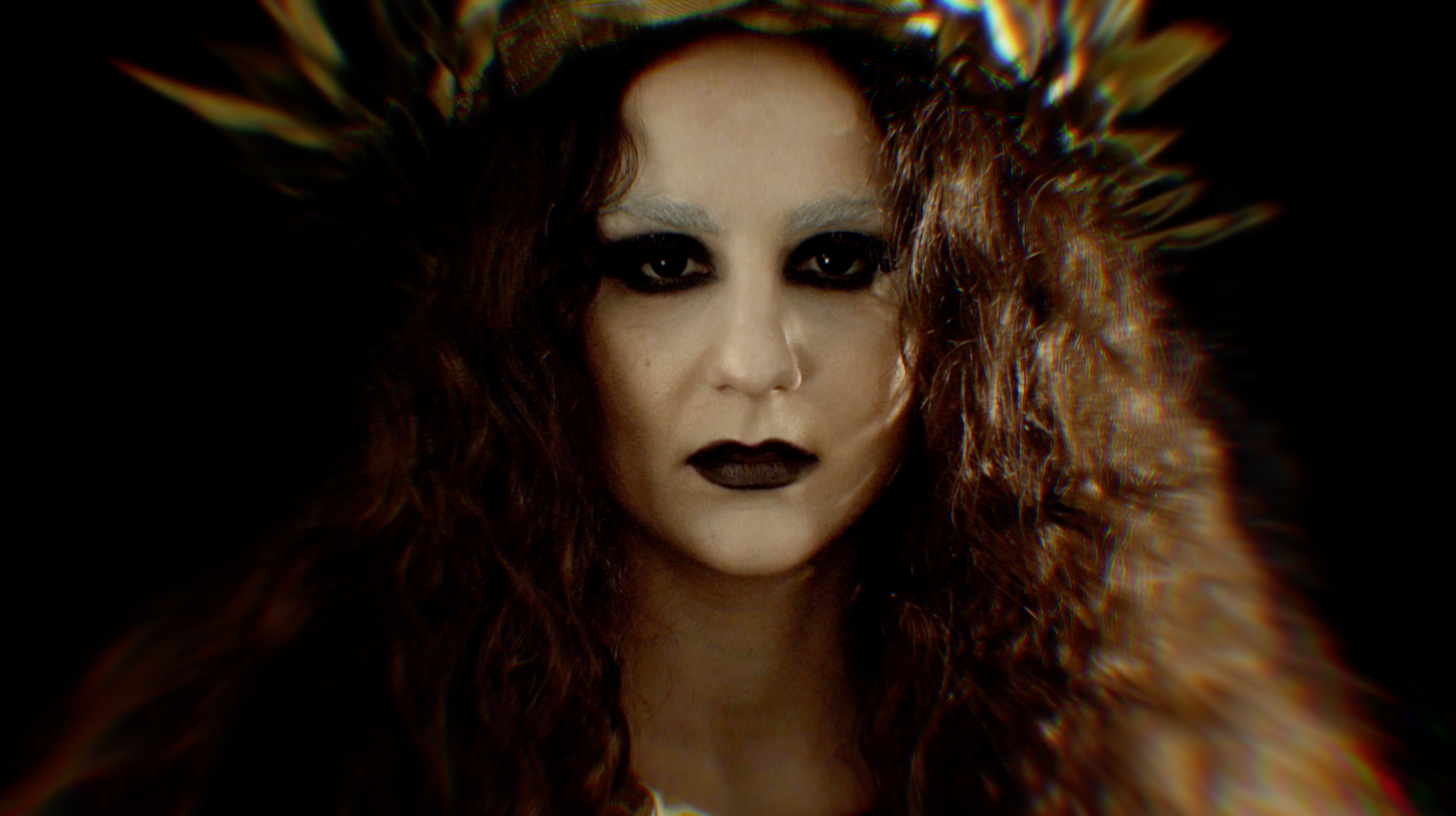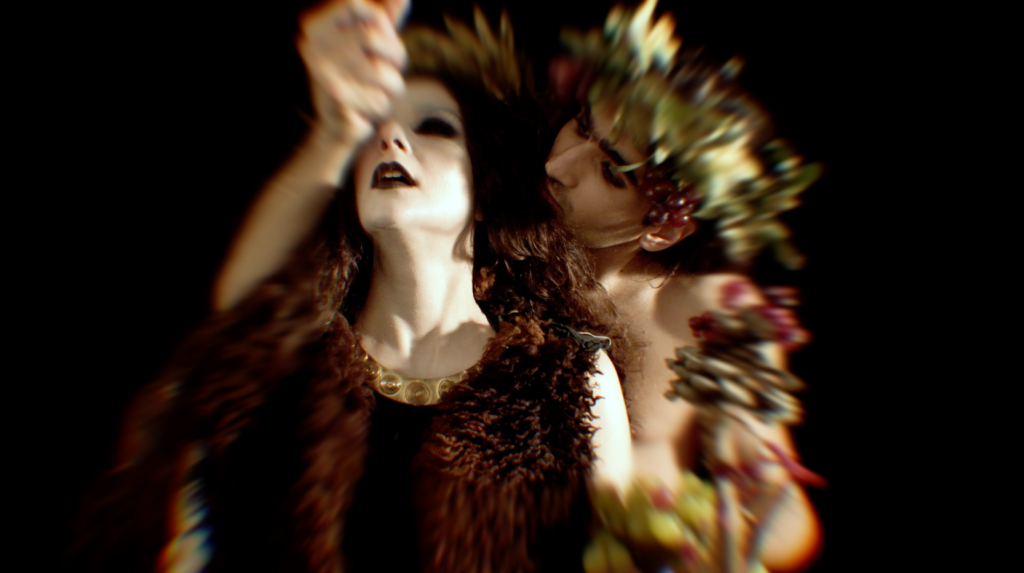We warmly welcome Michael Michailidis and Adamantios Petritsis, creators of the YouTube channel Ancient Greece Revisited, as our featured authors for March. On Ancient Greece Revisited, Michael and Adamantios bring to life a vision of Greece that goes against the British Hellenists’ version, that was drained of colour and made universal to this day. By retelling and reinterpreting the Greek myths, they lift the antiquated veil to reveal an ancient Greece that has been much misunderstood. Their article linked here explores the traces of the ‘Great Goddess’ found in mythology and examines her place in the hearts and minds of the ancients.
Interact with Michael and Adamantios on our AoM Forum here.
“Don’t forget–Rome fell not having grasped the phrase: darkmotherscream.”
– Andrei Voznesensky, translated by Robert Bly & Vera Dunham
In 1861, a book appeared in Basel. It was called “Das Mutterrecht,” and through its obscure pages, it proposed a controversial yet groundbreaking theory: that all human cultures, and long before they developed the patriarchal structures we know of today, began… as matriarchies [1]. Its author was a Swiss antiquarian and professor of Law, Johann Jakob Bachofen, and his book was aptly named “Mother Right,” in reference to what he believed was the original “social contract” of early human cultures.
The historical climate at this time was far from neutral. Following the Revolution in France and Napoleon’s early victories, a wave of nationalism had swept the Continent, and new nations were beginning to form the map of Europe as we know it today. Together with this change came a need for a new historical narrative, one that could link these newly-minted nations to the line of European history, and archeology began to be a prime focus. A critical moment in these developments was reached a short decade after “Mother Right” saw print, and when German businessman and self-taught archeologist Heinrich Schliemann discovered in Turkey the site of an ancient fortress, which he believed was the original site of “Ilion”, the mythical castle of Troy that inspired Homer’s first epic: the “Iliad.”As news reached his homeland of Germany, Schliemann’s discoveries began to assume a new meaning: that of a “pagan alternative” to the origin-myth of Christian Europe, while his admirers painted those early Greeks of Homer as part of a “proto-Aryan” culture, a patriarchal world of warrior kings. [2].
But while Schliemann’s theories about a prehistoric patriarchy, a warrior culture as had been described by Homer was proven to be correct, nothing by way of a prehistoric matriarchy was, as of yet, backed by any evidence. And so, in 1896, as the last Turkish troops were departing from a liberated Crete, destiny would leave the task to an English archeologist: Arthur Evans, who first managed to obtain the necessary permits by the newly established government… and began digging. Soon after, and during the summer of 1900, Evans hit upon the ruins of a palace, one that, much like Schliemann’s Troy, belonged to the Greek Bronze Age, a thousand years before the Parthenon was built. The fragments he found from the palace walls appeared to have portrayed a dancing group of young men and women playing half-naked in nature, while his most important discovery by way of proving the existence of an archaic matriarchy were the two female idols that he found lying in the palatial ruins, representing a priestess or goddess with bare breasts holding a snake in each hand. At the sight of these findings, Evans became convinced that he had reached the locus of a “Mother Right” type culture, and, filled with enthusiasm, he commissioned a project of restoration so radical that it would later put serious doubts on his scientific integrity. Some, in fact, would go as far as claiming that Evans had not discovered, as much as invented his new culture. But for all the doubts, the name this romantic Englishman gave to the newly unearthed civilization would stick, and would since describe the Cretan Bronze Age: “Minoan Civilization.”
Whatever the historical details truly are, however, if one turns their attention to Greek mythology, one can hear echoes of what appears to be a “dialogue” between two distinct cultures: one Earth-Oriented, more mystical and even feminine, and the other Sky-Worshiping, warrior-like and masculine [3]. In various legends, Zeus, sky-god par excellence, is imagined as ravaging young maidens that bear a close resemblance to “Minoan” goddesses. One such legend is the birth of Dionysus. There, Zeus fell in love with Semele, a beautiful young mortal whose name has been traced etymologically to an early form of the Greek word for “earth.” An “earth deity” perhaps, one who might once have stood supreme in her own pantheon, long before the Indo-European Greeks or Dorians came down from the north bringing their thunder god. Zeus descended from his mountain tops and into Semele’s embrace transformed into a mortal. Through their union, Semele would conceive a child, but Hera, the jealous wife of Zeus, tempted Semele to ask the sky-god to reveal himself in his divine, rather than human form. Alas, the trick was a deadly one, and when Semele insisted on seeing Zeus in his true form, he exploded in a dash of lightning, burning Semele to the ground. In sorrow, Zeus took pity on their child, still in her dead mother’s womb, and placed it inside of his thigh, from where he would be born as Dionysus.
The myth retold as well as many others, shows traces of a union, one between the earth-worshipping “Minoans” that Evans re-discovered, and the Dorian Greeks who came into the Greek peninsula from the north around the 12th century BC. What followed is often called the “Collapse of the Bronze Age,” a historical event where major city centers were abandoned and writing was forgotten for the next 200 years. In Homer’s ”Iliad,” his first of his two great epics, we find a world of practically illiterate warrior-kings, descendants perhaps of these first Greek Indo-Europeans. But while in the Iliad women are presented as trophies to be passed along among warriors, in Homer’s second epic, the Odyssey, we find the resurgence of the Great Goddess in the form of powerful witches. There, we hear of Odysseus, a warrior who fought against Troy, now reduced into a shipwreck trying desperately to find his way back to Ithaca, his island kingdom. Leaving Troy, Odysseus had plundered a city on his way back, and Poseidon, god of the sea, had punished him with a storm that cast him way off course. What follows would be a series of encounters with female characters, witches, who, unlike the maidens of Troy, now appear more powerful than even the men who try to take them. In the first of such encounters, we find Circe, a sorceress who enchants the animals with her voice, and who turns Odysseus’ men into pigs. Odysseus overcomes her not by strength but cunning, and through the help of the god Hermes, a trickster-god rather than a warrior. Circe shows Odyseus the way to the underworld, the realm of feminine mystique, where he meets with his old friends who together fought against Troy.
The second incarnation of the Great Goddess in the Odyssey is Calypso. Unlike Circe, she is serene and welcoming and shelters Odysseus in her remote island home, offering to him the gift of immortality if only he would stay with her. Odysseus refuses and tries one more time to return only to be shipwrecked again on the island of the Phaecians. Upon reaching the shore, Odysseus witnesses a young girl: Nausica, the king’s daughter, who helps Odysseus reach her father. From there, Odysseus finally finds his way back, and into the embrace of his still loyal wife. Notice how these women form a sequence: from the evil witch Circe to the gentle goddess Calypso, to the absolute purity of Nausica. It’s as if Odysseus learns to see the feminine in more and more accepting terms, and without being afraid any longer. For some interpreters of this myth [4], the Odysseys works as an “engine of transformation,” where the old Dorian culture that conquered over the Minoan world of the Bronze Age, slowly understood and incorporated the most vital parts.
Another great myth that illustrates this transformation is the birth of Athena. We are told that Zeus, the Indo-European thunder god, laid with Metis; a goddess, whose ability to transform into any animal she wished reminds us of those early Minoan figurines collectively named “Lady of the Beasts.” Zeus had been given a prophecy, foretelling his downfall from one of his own children, and so, when Metis got pregnant Zeus challenged her to display her powers by transforming into a fly. Alas, it was a trick played by the thunder god, for when she succeeded and began to fly around him, Zeus swallowed her together with their unborn child. Days later, Zeus was walking casually near a lake, when his head began to hurt with a terrible ache. Screaming in agony, he summoned Hephestus, the ironsmith of the gods, who raised his mighty hammer and cracked Zeus’ skull open, out from which came the child that he nearly destroyed: a woman, no less, but one with all the masculine traits of a warrior. Her name was Athena, and her statue would adorn the city of Athens during its absolute heights in the 5th century BC.
Again, here, we are witnessing an act of transformation, of “metabolism” even, where the conquering Dorians could not entirely “stomach” the highly developed cultures that pre-existed them, and were simply forced to give birth to something new. That “something” was… Classical Greece, a culture that incorporated the warrior ethos of Homer with the most cultured elements of the Minoan Bronze Age. This does not suggest, of course, that women were placed once again in a position of equality. But myths do not necessarily work on the plane of history but on the collective unconscious of the people who create them. Nor does this mean, on the other hand, that myths happen “inside of our heads” only. Rather, the change in the types of stories we tell betrays a deep and often lasting change in the collective attitudes that we hold. Likewise, the assimilation of the Goddess in Greek mythology must have something to do with the fact that only after Athena was born and Odysseus came home to his wife, the culture that we know as Ancient Greece reached its full potential.
References3
[1] J.J. Bachofen. Myth, Religion, and Mother Right (Princeton University Press 1992.)
[2] Cathy Gere. Knossos and the Prophets of Modernism (Kindle Location 152-158). Kindle Edition.
[3] Jane Harrison, Prolegomena to the Study of Greek Religion, Chapter 1: “Olympian and Chthonic Ritual.” Princeton, NJ: Princeton University Press, 1991.
[4] Campbell, Joseph. Goddesses: Mysteries of the Feminine Divine (The Collected Works of Joseph Campbell Book 6). Joseph Campbell Foundation. Kindle Edition










Classifying certain cultures, or eras, as patriarchal, and others as matriarchal, based on extant parts of myths and history, could be misleading. More probably, all cultures (or rather human culture) at all times use several economies, social structures, politics, myths, and dialogues, or panarchical discourse (Gunderson & Holling). You run the risk of constructing a diffusion narrative, as Witzel had done on a larger scale, and with predictably racist and nonsensical results.
The Hercules myth cycle confirms that matriarchal, patriarchal, and Amazonian features co-exist. For example one of his Labours were to retrieve the shoulder belt of the Amazonian or Steppe queen. I have demonstrated the usual, universal, full cycle of archetypal features in the Hercules cycle landscape, and the myths anchored around the Aegean and eastern Mediterranean seas, in a magazine edition. Here is an extract: https://stoneprintjournal.wordpress.com/2021/01/16/hercules-arcadia-and-greece-myth-maps/
And perhaps more relevant to matriarchy, here is an extract dealing with the most feminine of the Peloponnesian sites and myths, anchored to Cleitor: https://stoneprintjournal.wordpress.com/2021/04/02/cleitor-polar-axle-of-the-arcadia-myth-map/
I have moved my comment above, to the Phorum thread on your article.
As eloquently captured in Nietzsche’s 1872 book, The Birth of Tragedy, born of the Apollonian/Dionysian opposition and conflict.
Great to see you feature Michael from AGR. He is true expert that is providing a renewed light on Ancient Greece that aligns with Graham Hancock’s theories. I believe if we keep digging through myth, religion and artifacts we will find that the original god that was worshipped was simply “earth” for all she provided humanity as it rebuilt itself after the great destruction that occurred in the Younger Dryas period.
Hekate, the Great Goddess. Queen of the Witches, the Tri-faced Goddess. Blessed Be ???
There isn’t a shred of evidence that the concepts of ‘religion’ and ‘supernatural’ existed in any culture, anywhere around the globe, prior to their invention in the 13th century by Christian High Scholastics. Ancient mnemotechnical traditions weren’t ‘religion’ or ‘spirituality’ and noting that neither narrative, ritual, symbol, worship, or dramatic enactment (theater, dance, ceremony) are inherently ‘religious’. Specific to this article, there is no term in Classical Greek that functions as ‘religion’ or anything similar. The same is true of classical Native American, Japanese, Chinese and Islamic cultures. There is also no such term, or similar, in PIE (Proto Indo European).
These definitely areligious mnemotechnical traditions, around the world, were advanced science, complex astro-mathematics and time-spanning historical record that were woven with psychologically-sophisticated moral and social codes that were consistent with the science, astro-math and history. They were brilliant, rational, complex constructions designed to store info, data and practical wisdom in the greatest number of biological hard drives in the interest of the survival of the last remaining iteration of ‘human’, noting that at least nine other iterations extincted horribly during just the past 300k years, leaving just us.
The characters, places and events named / described in these mnemotechnical traditions that extend back tens of thousands of years, likely hundreds of thousands, referred to cyclical and random exoterrestrial patterns and processes that regulate, and with frequent, forecastable, peer-reviewed near-term periodicity, radically and dangerously deregulate terrestrial operating systems and physiological / neurological patterns and processes, resulting in back-to-back climate extremes and weather catastrophes, runaway mass extinction, human madness, rapid human population decline and human existential crisis.
This cast of characters, places, events were named / styled differently in cultures around the globe but they all represented elements of, and tracked, the same phenomena: cyclical celestial mechanics and their deadly cataclysmic effects here in Earth. No woo woo.
The modern human animal, trained to fear, dislike, resent and ignore science, rationality, facts and uncertainty, retreats into a received, very exploitable, delusional, light-filled fairy tale of supernatural ‘religion’, ‘spirituality’, magical-thinking and a pandemic ‘all-about-me’ism while imagining that the nature of all existence is a perpetual, linear, upward and forward trajectory toward ever better circumstances and good feelies.
Religion, spirituality, mysticism and all-about-me’ism are ruling class perception management tools that function to protect power and profit. They are a purposeful recontextualization. They are a cash cow and so is the captured and conditioned human mind. The mnemotechnical traditions of the ancients are none of these and functioned to protect the sanity and the survival of the human species. They were carefully constructed and sent forward for us, for right now, as everything is collapsing again and right on time.
Religion, spirituality, mysticism and all-about-me’ism are a very modern madness of extreme pathological-alienation from actuality to the point of literal psychosis that includes an hallucinatory amnesia that serves to protect against remembering / knowing where we actually are, how this tiny, twirling, exceedingly unstable clump of space debris actually works, what is actually happening now and what will actually happen. Sooner than later. Tick tock.
(Standing slow clap) Bravo….Bravo….Bravo!